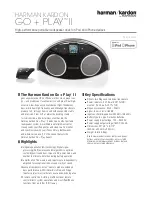
Figure 4. Cabling scheme for analog setup
Figure 5. Cabling and 2029A tone control settings when using subwoofer 1091A.
Figure 3. Cabling scheme for digital setup
How to set up Genelec 1091A
How to set up Genelec 1091A
How to set up Genelec 1091A
How to set up Genelec 1091A
How to set up Genelec 1091A
subwoofer
subwoofer
subwoofer
subwoofer
subwoofer
A standard Genelec 1091A subwoof-
er package contains cables to connect
to both 2029A Digital units. The cables
have 1/4" (6mm) plugs that connect to
the 2029A Digital units (see figure 5).
On each 2029A Digital, flip the tone
control switch number 2 to "ON" posi-
tion. This is the right setting when the
subwoofer 1091A is used.
Setting tone controls
Setting tone controls
Setting tone controls
Setting tone controls
Setting tone controls
The response of the system may have
to be adjusted to match the acoustic
environment. The adjustment is done
by setting the tone control switches on
the rear panel. The tone control has
four switches and can adjust 'treble tilt',
'bass tilt' and 'bass roll-off.' The facto-
ry settings for these are 'ALL OFF' to
give a flat anechoic response. See
Figure 6 for suggested tone control
settings in differing acoustic environ-
ments. Figure 8 shows the effect of the
controls on the anechoic response.
Always start adjustment by setting all
switches to 'OFF' position. Then set a
switch to 'ON' position to select the
necessary response curve.
5. Monitor placement.
5. Monitor placement.
5. Monitor placement.
5. Monitor placement.
5. Monitor placement.
Console top mounting.
Console top mounting.
Console top mounting.
Console top mounting.
Console top mounting.
Avoid mounting Genelec 2029A Digit-
al monitors directly on the console top.
Instead, position the speakers slightly
behind the console by using floor
stands, wall mounts or microphone
stands. This minimizes sound colour-
ing reflections from the console sur-
face.
Room placement.
Room placement.
Room placement.
Room placement.
Room placement.
To produce a true and accurate stereo
image the monitors must have exactly
similar frequency responses. When
placed in a room monitor responses
change due to reflections of the sound
waves from the room’s boundaries. It
is necessary to place the monitors at
the same height and also at the same
distance from the front and side walls
so that reflections, and therefore
changes to the frequency response,
are similar.
To avoid differences in frequency re-
sponses due to reflections from the
























